If you wanted a real Christmas tree this year but haven’t bought one yet, you may be out of luck. As The Wall Street Journal reports, we have a nation-wide shortage of trees, caused by more people staying home for holidays and retailers underestimating demand. Last week while I was up buying one of the last remaining trees at a garden store, workers were taking down the poles in the lot. Greenery is hard to find, too. Stores had heaps of it before Thanksgiving, but the next week most of it was gone. Now seeing pretty houses with green-framed doorways makes me feel slightly envious. However, plenty of the most-holiday-of-holiday-flowers are still available: Ponsiettias.
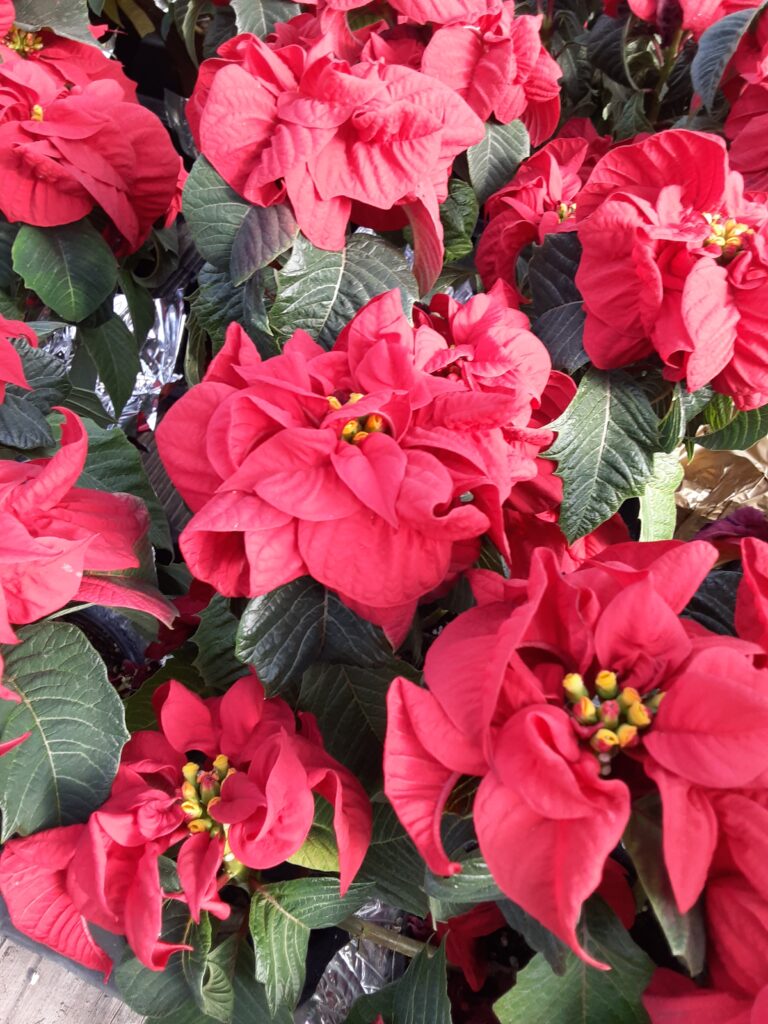
Poinsettias bloom as the days get shorter, which makes them popular around the holidays. In addition to traditional red, nurseries have many different colors to choose from, including pink, ivory, and variegated.
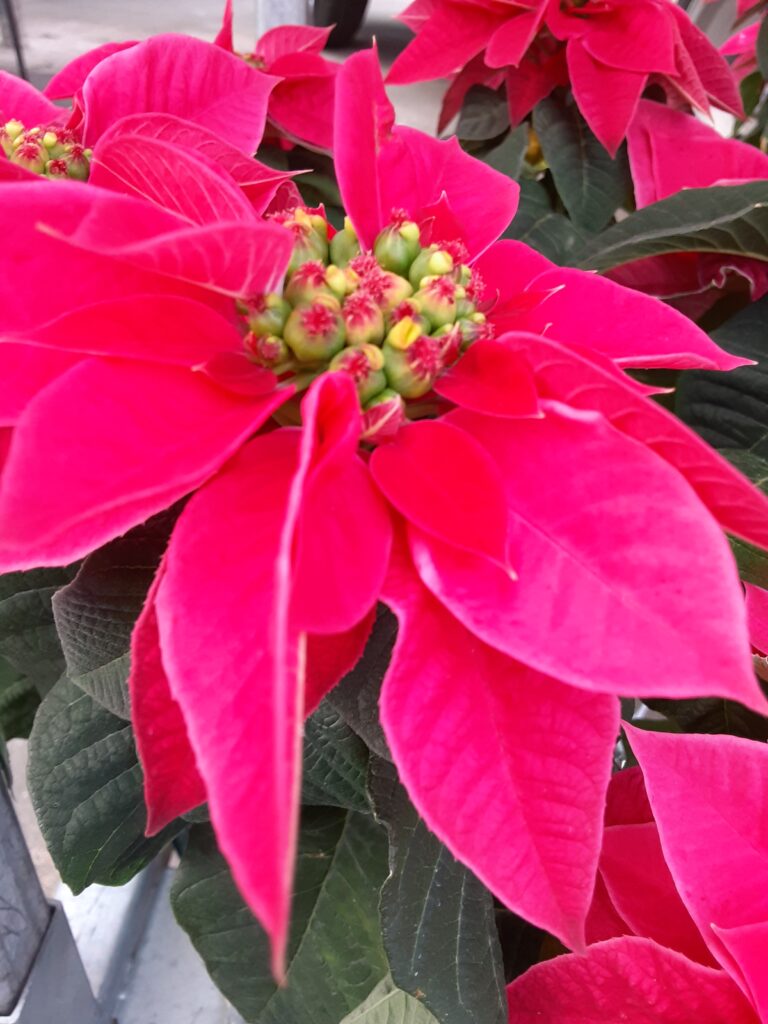
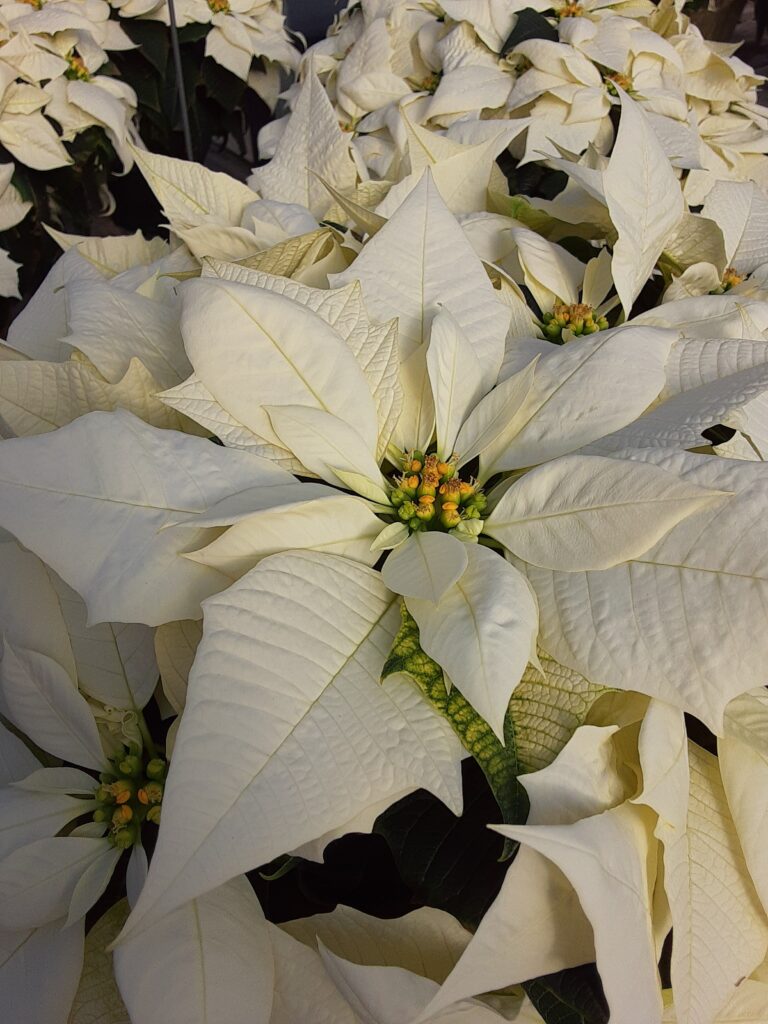
Each year my father would give one to my aunts. Now he gives one to me. When I received it, the planting medium was very moist. I planned to keep it that way, but forgot. That was the right thing to do, it turns out. According to my friends at Family Tree, a poinsettia should be allowed to dry out between watering, about half way down the pot. Then soak it.
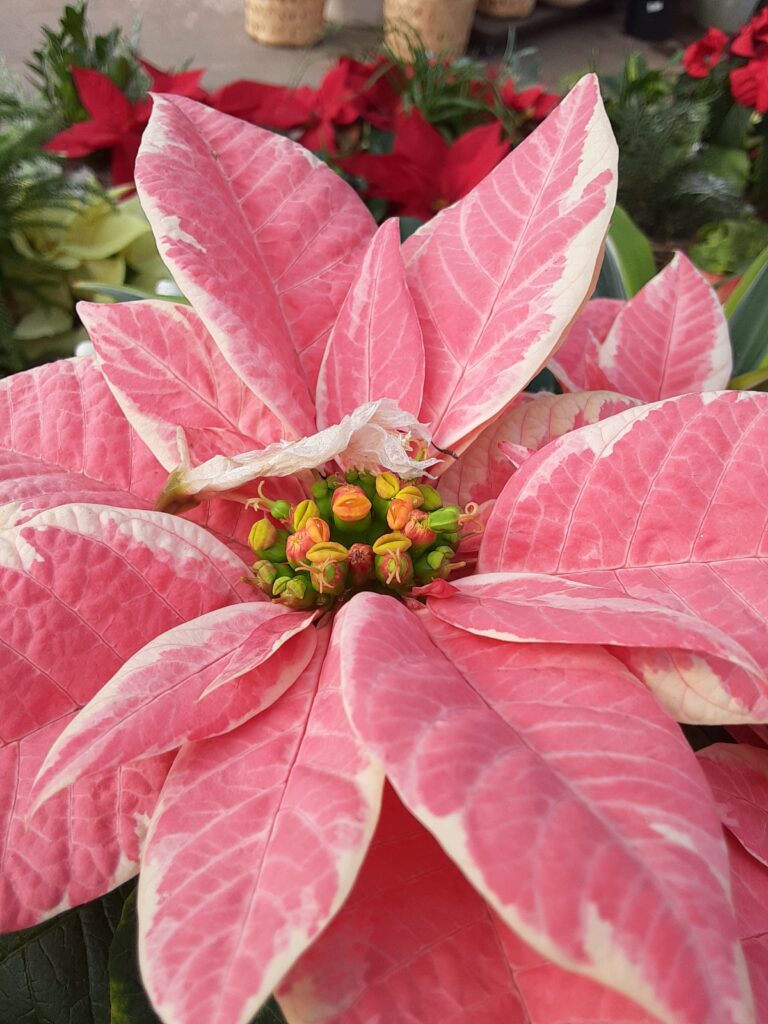
Speaking of variety, the holiday exhibit currently on display in the conservatory at Powell Gardens offers plenty of inspiration. Horticulturist and designer Brent Tucker has grouped poinsettias with other plants that thrive under similar conditions. The lively mix of colors and textures is a visual feast.
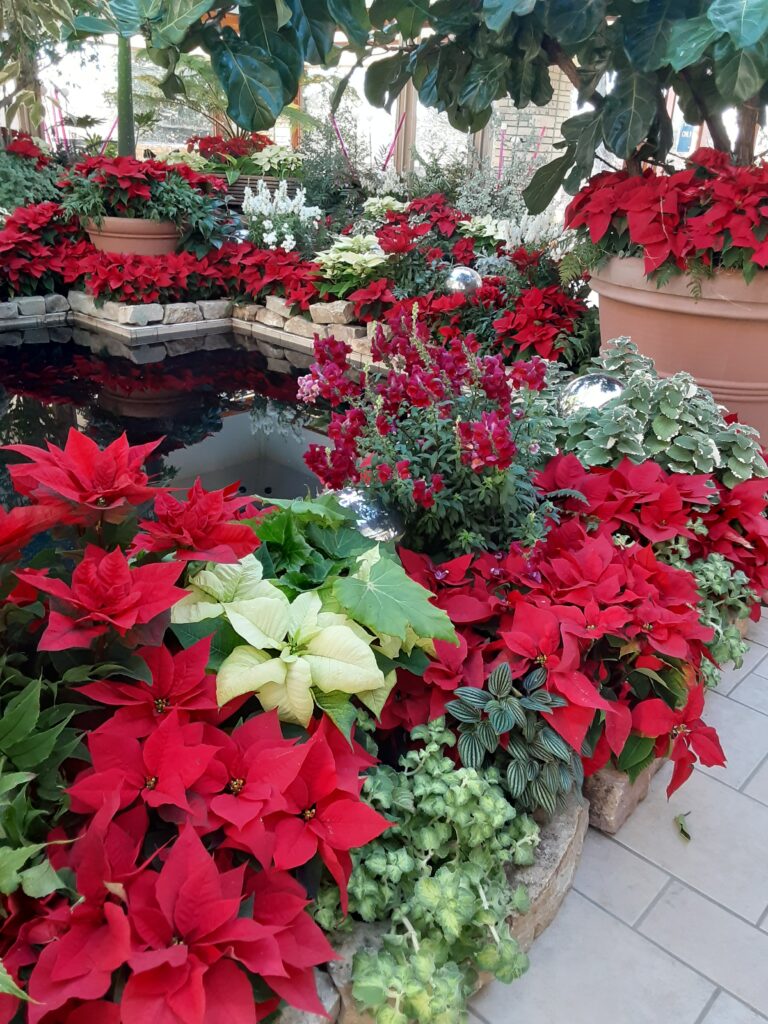
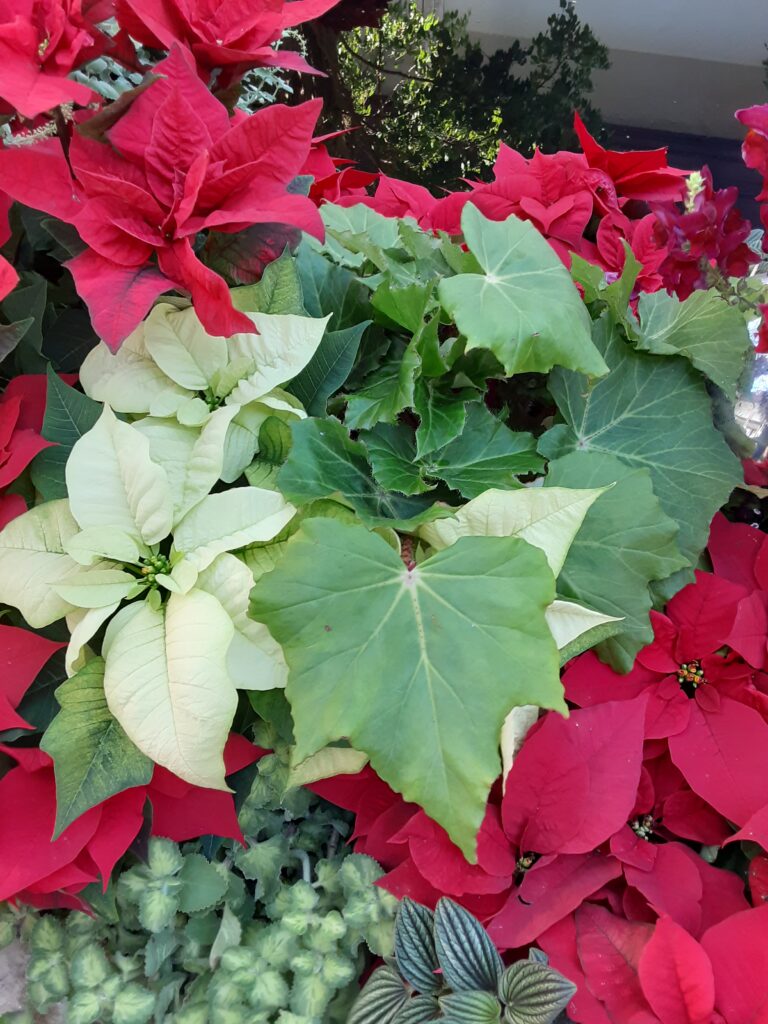
Tucker begins ordering poinsettias in January for the following year’s display. Small, rooted cuttings arrive at the greenhouse in summer, where gardeners coax them into bloom by November.
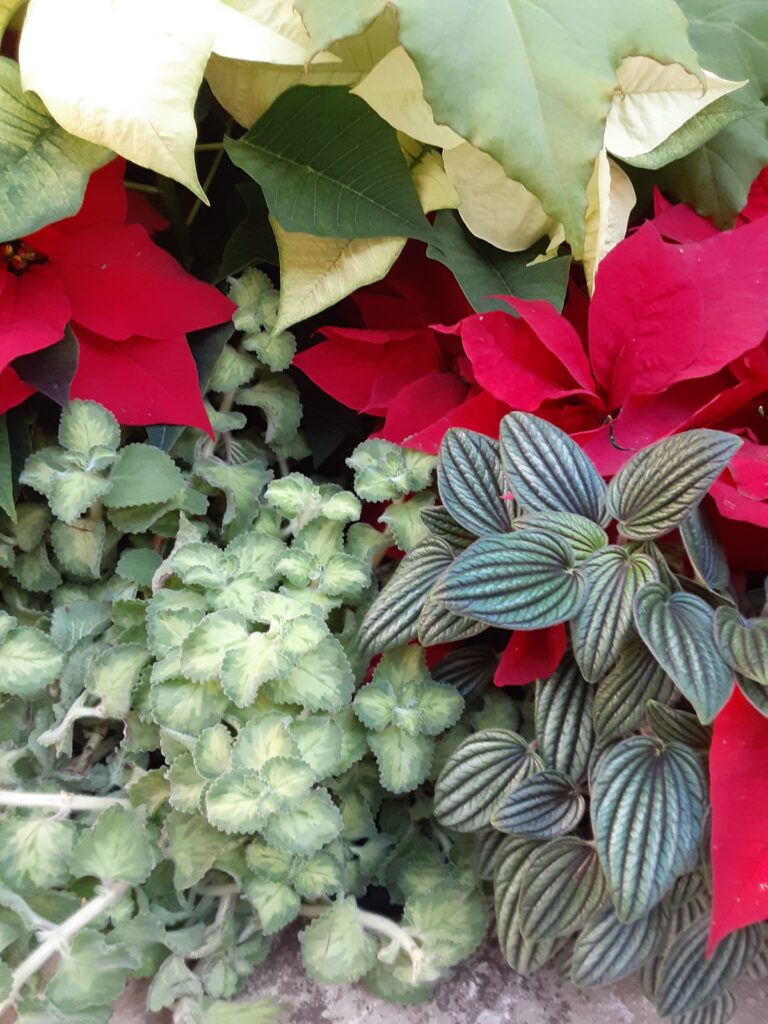
Native to Mexico, Poinsettias are members of the Euphorbia, or spurge, family. What we think of as their colorful flowers are actually bracts, or leaves. The tiny yellow flowers in the center are called cyathia. Poinsettias change color in response to lower light levels, and getting them to re-bloom can be tricky. Plants must be kept out of the light and stay healthy, and they won’t be as bushy and compact as ones from a greenhouse. Family Tree Nursery provides detailed instructions for the determined. In warmer climates poinsettias can survive year-round as green plants. When I lived in Houston I planted one in the yard that grew to be five feet tall and was as gangly as a young chicken.
Poinsettias’ popularity as holiday plants can be traced to the efforts of horticulturist and nursery owner Paul Ecke of the Ecke Ranch in Encinitas, California. He was first to develop their commercial potential. His promotional efforts included giving free poinsettias to television studios during the 1960s. Ecke also perfected important propagation techniques, which he kept secret.

A 2008 article in the Los Angeles Times compares the Eckes’ dominance in the poinsettia market to the DeBeers in diamonds. “The Ecke family had a virtual monopoly on the world’s poinsettia market largely because no one could figure out how they produced uniformly perfect plants with multiple branches emanating from a single stem—the so called Ecke style.”
Eventually somebody leaked the nursery’s secrets, which ended their monopoly but led to the creation of many new varieties. Apparently customers’ interest in new poinsettias is insatiable.
Poinsettia prices vary widely, ranging from $40-50 for a tall plant to just a few dollars for a three-inch one. I saw some for sale at Lowes for one dollar. As the folks at Family Tree point out, these are loss leaders, priced below cost to get people into the store. “Nobody is going to make a profit on a $3.99 poinsettia plant.” We’ve all have seen neglected plants languishing on the carts at big box stores, although sometimes they can be saved. The poinsettias from a nursery like Family Tree are all home grown, cultivated in their own greenhouses and carefully tended to provide best experience possible for customers.
And despite what you may have heard, poinsettias are not dangerous. Poinsettias are harmless to people. According to the American Kennel Club, they can be irritating to dogs and cats if consumed, but not serious or fatal.
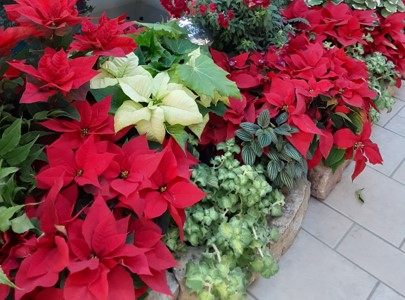
The Powell Gardens holiday exhibit will be on display during the Festival of Lights, which runs until January 3, 2021.
Thanks for reading, and I wish you all love, joy and, a wonderful holiday!